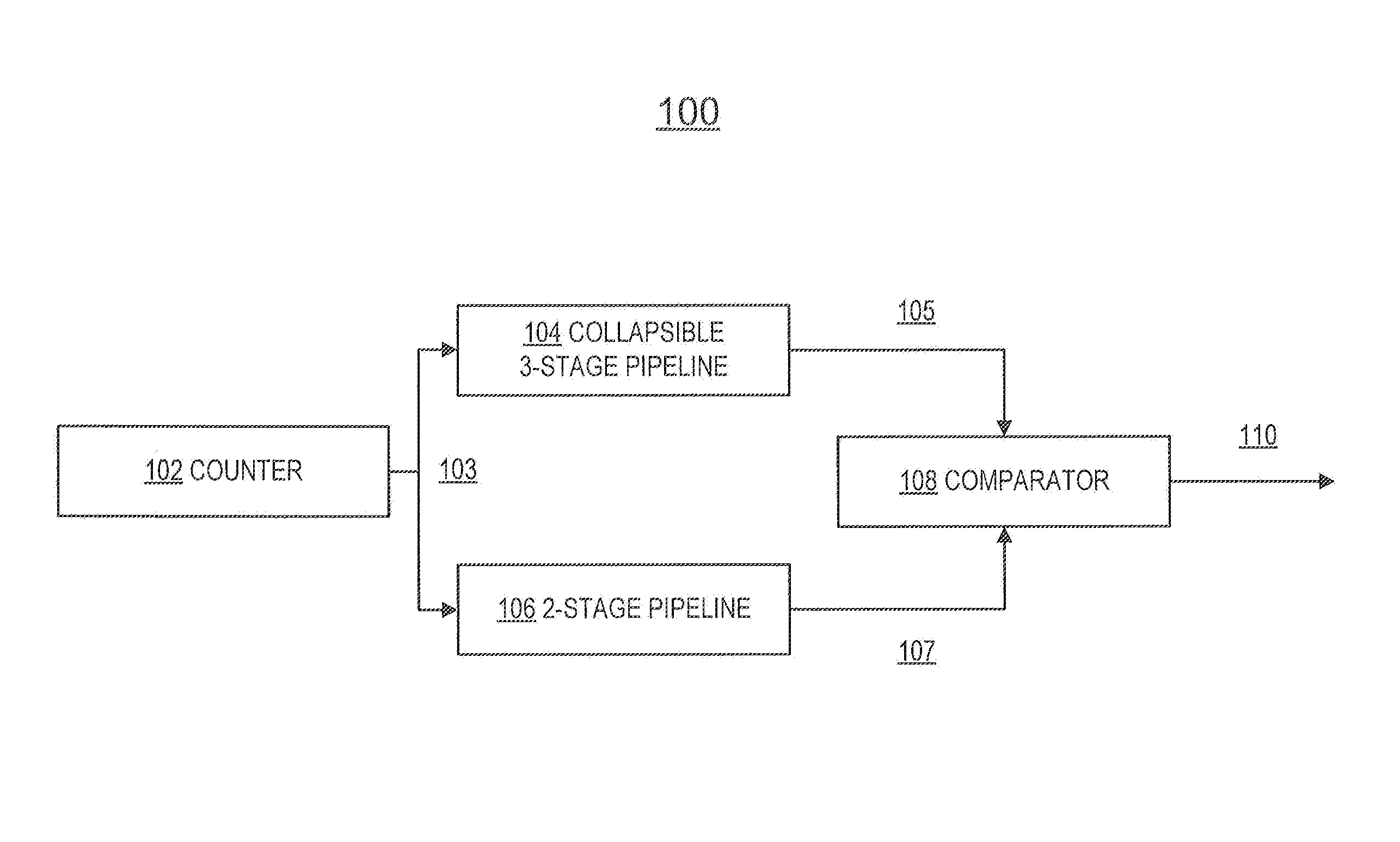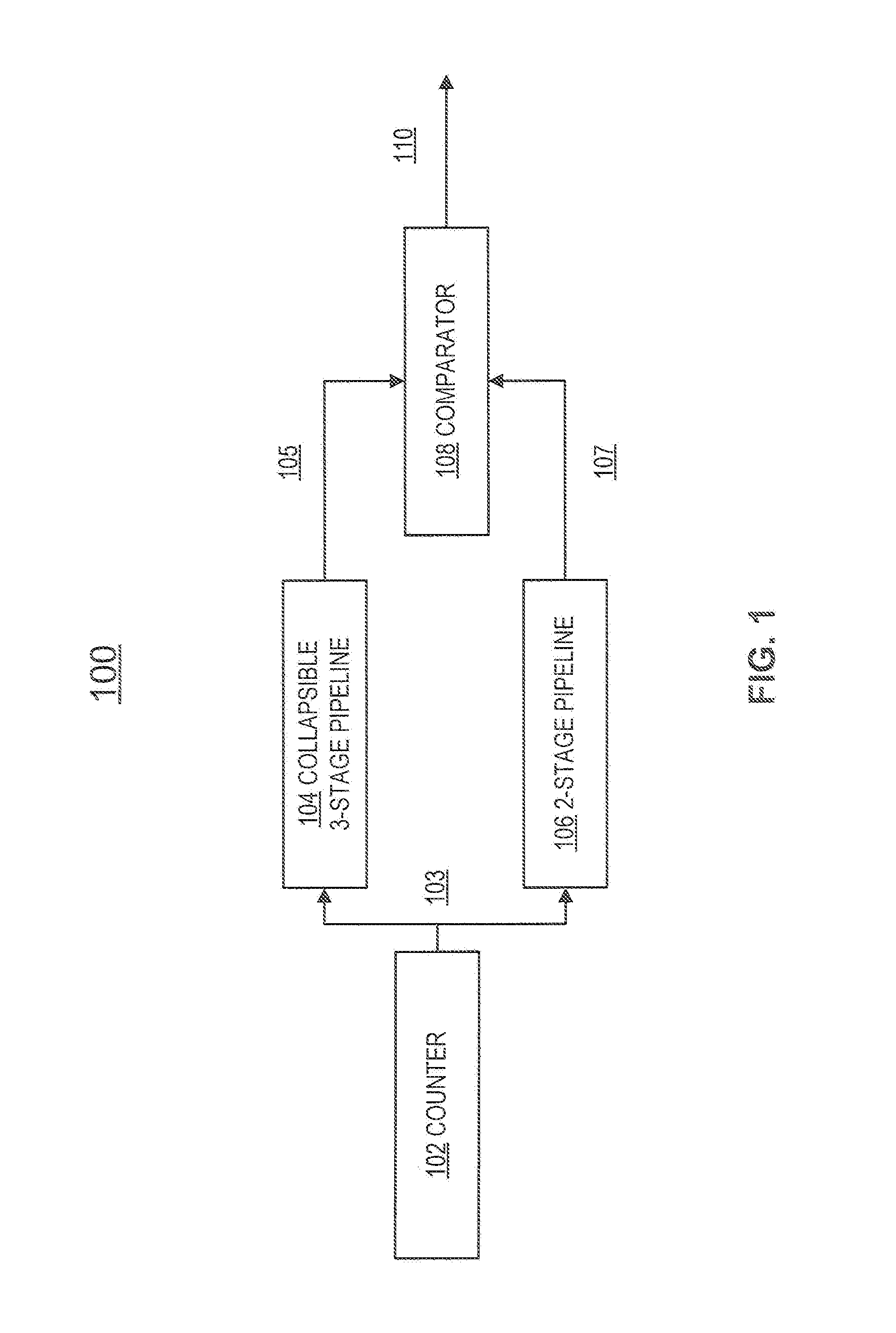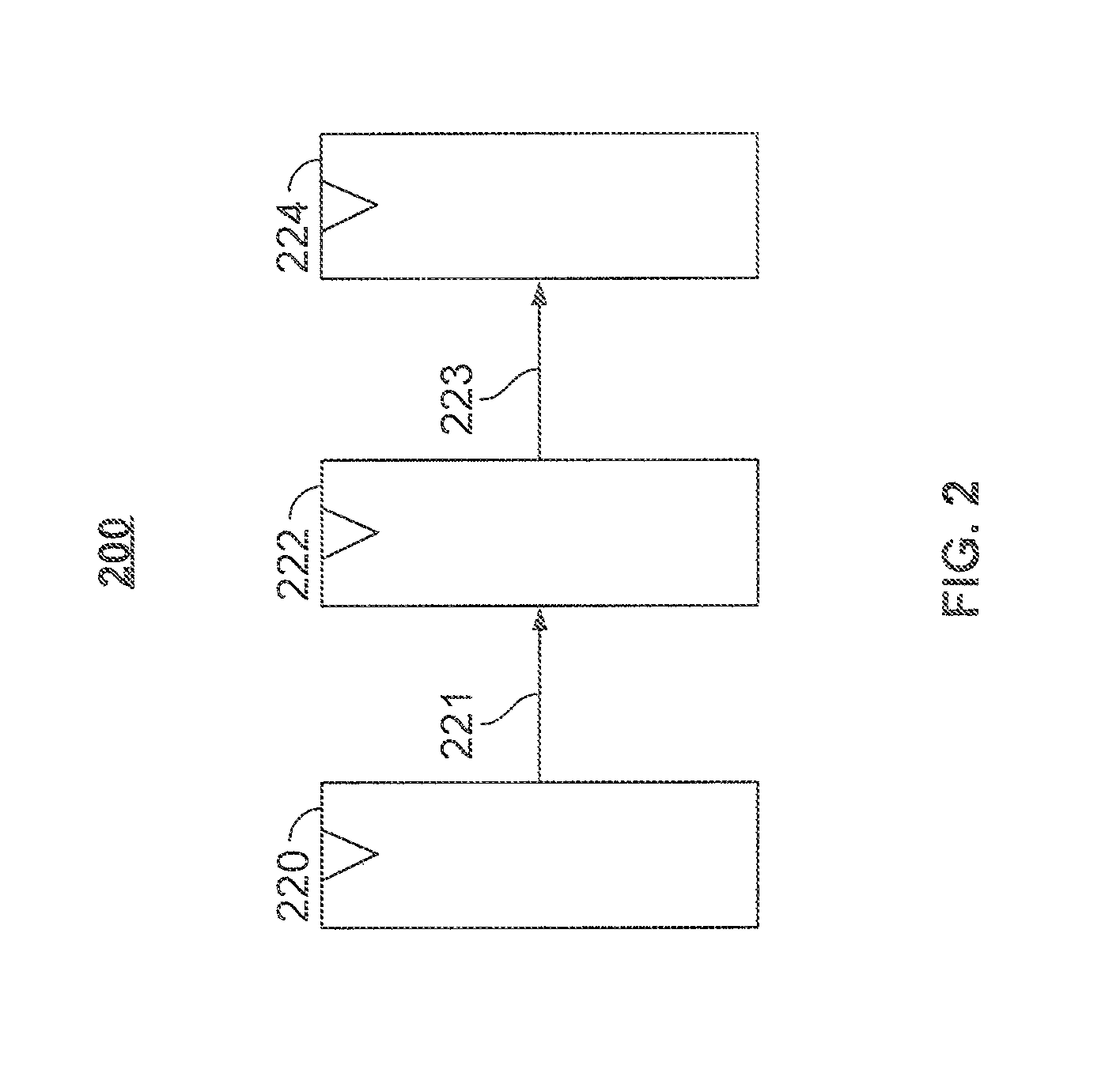Systems and methods for clock alignment using pipeline stages
a technology of pipeline stages and clocks, applied in the direction of digital transmission, pulse automatic control, generating/distributing signals, etc., can solve the problems of increasing the loss of the useful portion of the clock cycle, exacerbate the uncertainty between related clock signals, and limited clock generation options of field-programmable gate arrays (fpgas)
- Summary
- Abstract
- Description
- Claims
- Application Information
AI Technical Summary
Benefits of technology
Problems solved by technology
Method used
Image
Examples
Embodiment Construction
[0024]The systems and methods of the present invention include a circuit for clock alignment on an integrated circuit. In an ASIC or ASSP, a generation circuit may be used to create various clock signals, which may be distributed locally. However, on an FPGA, clock generation is limited because clocks have to be distributed very precisely, and specific resources may be needed to perform the distribution. Moreover, an FPGA is configurable, such that the clocks to be used in an FPGA may also need to be configurable. However, as clocks become configurable, they may degrade.
[0025]In one example, clock sources may be required to originate at a small number of locations on the integrated circuit. This does not provide much flexibility to provide the clock signal into the portion of the circuit that uses the clock signal. Accordingly, in an FPGA, it is more likely that clock signals will be routed over a long distance before they are actually used in the circuit elements (such as flip flop...
PUM
 Login to View More
Login to View More Abstract
Description
Claims
Application Information
 Login to View More
Login to View More - R&D
- Intellectual Property
- Life Sciences
- Materials
- Tech Scout
- Unparalleled Data Quality
- Higher Quality Content
- 60% Fewer Hallucinations
Browse by: Latest US Patents, China's latest patents, Technical Efficacy Thesaurus, Application Domain, Technology Topic, Popular Technical Reports.
© 2025 PatSnap. All rights reserved.Legal|Privacy policy|Modern Slavery Act Transparency Statement|Sitemap|About US| Contact US: help@patsnap.com



